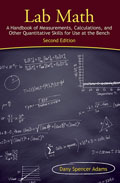Data Visualization
Scale matters: always show your audience the size of the subject
A short, easy to read essay by Helena Jambor* on The Node, gives some good tips for adding scale bars to images. She also gives a little history: interestingly, putting scale bars on images is not an age-old practice. Apparently, there was a time when scientists (and many non-scientists) were assumed to know how big things were. But that […]
GREAT charts! (not numbers, but, whatever)
http://flowingdata.com/famous-movie-quotes-as-charts/
Tabling Advice
How to Make Truly Terrible Tables: A Tutorial by David Streiner Part I: Be Too Accurate No, your eyes are not deceiving you; the title of the blog has changed slightly, from “How to Make Truly Terrible Graphs” to “How to Make Truly Terrible Tables.” This reflects the fact that it is possible to […]
Graphing Advice
How to Make Truly Terrible Graphs: A Tutorial by David Streiner Part 4: Where’s the Y? In previous blogs, I described how to make terrible graphs using some of the features of leading graphing packages, such as pie charts and 3-D graphs. But, this is unfair to users of other programs that do not […]
Graphing advice
How to Make Truly Terrible Graphs: A Tutorial David L. Streiner, special guest contributor and co-author of excellent statistics texts Part 3 – 3D or not 3D In the two last blogs, we learned the first steps in making truly terrible graphs: by confusing the role of a visual with that of a table, and by […]
Michaelis-Menten grapher
http://www.physiologyweb.com/calculators/michaelis_menten_equation_interactive_graph.html Physiology.web often has very useful calculators and explanations. Their interactive Michaelis Menten equation grapher is a very nice way to explore what can be a difficult concept to grasp.
Graphing advice
How to Make Truly Terrible Graphs: A Tutorial David L. Streiner, special guest contributor and co-author of excellent statistics texts Part 2: Pie in the Sky To really screw up visual presentations, use a pie chart. Even better, use two or more of them. In my last blog, we learned the first step in making […]
